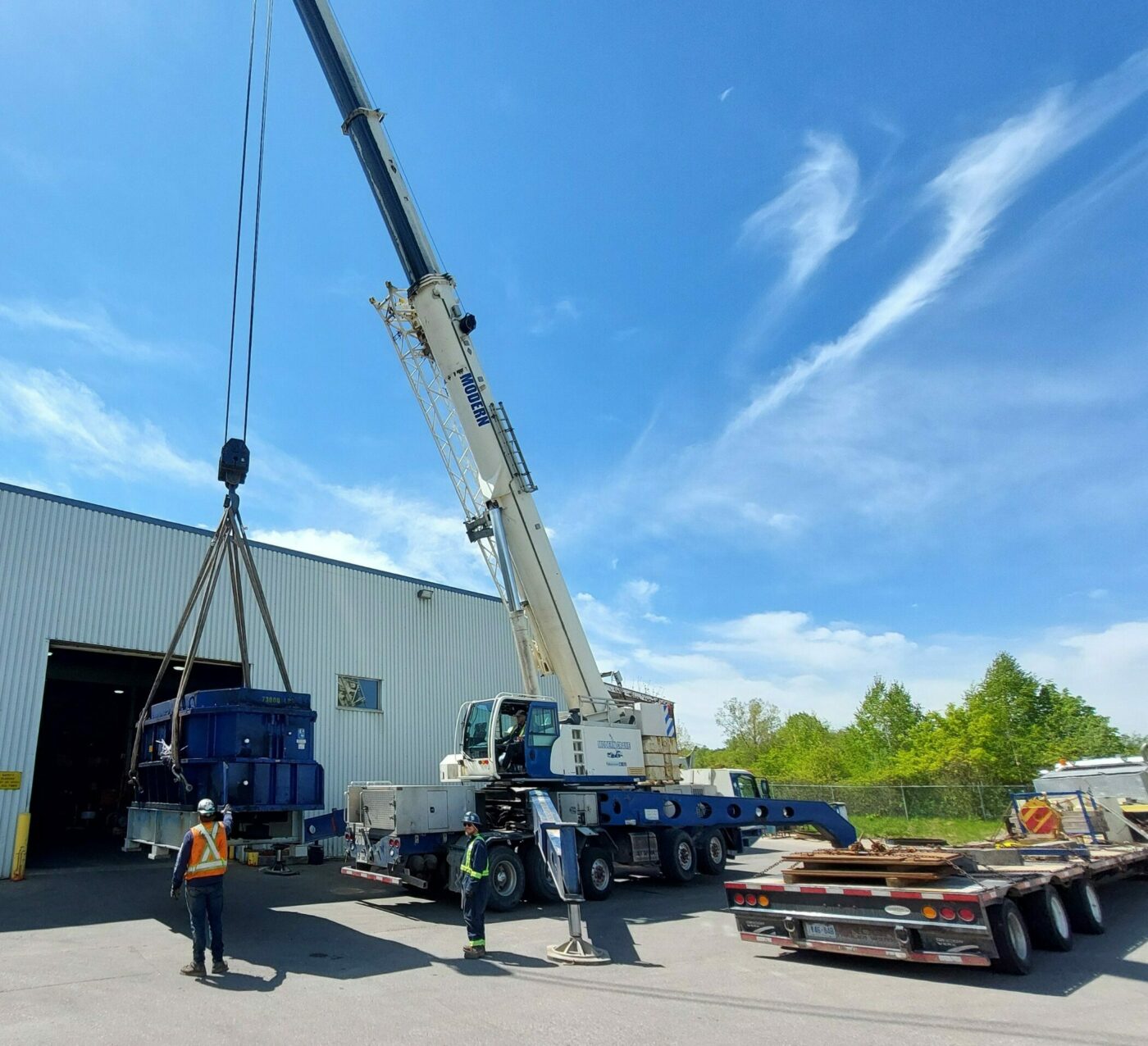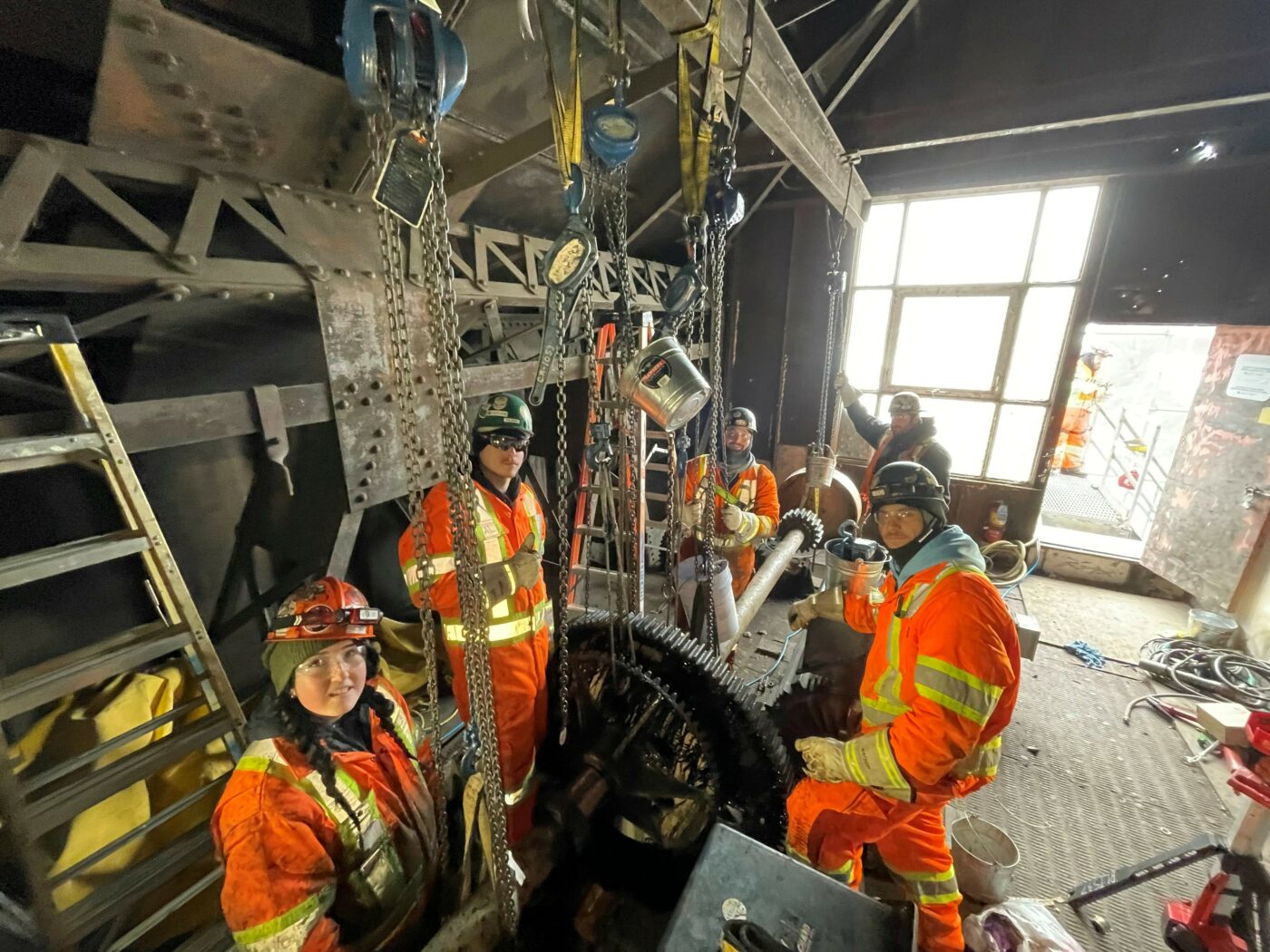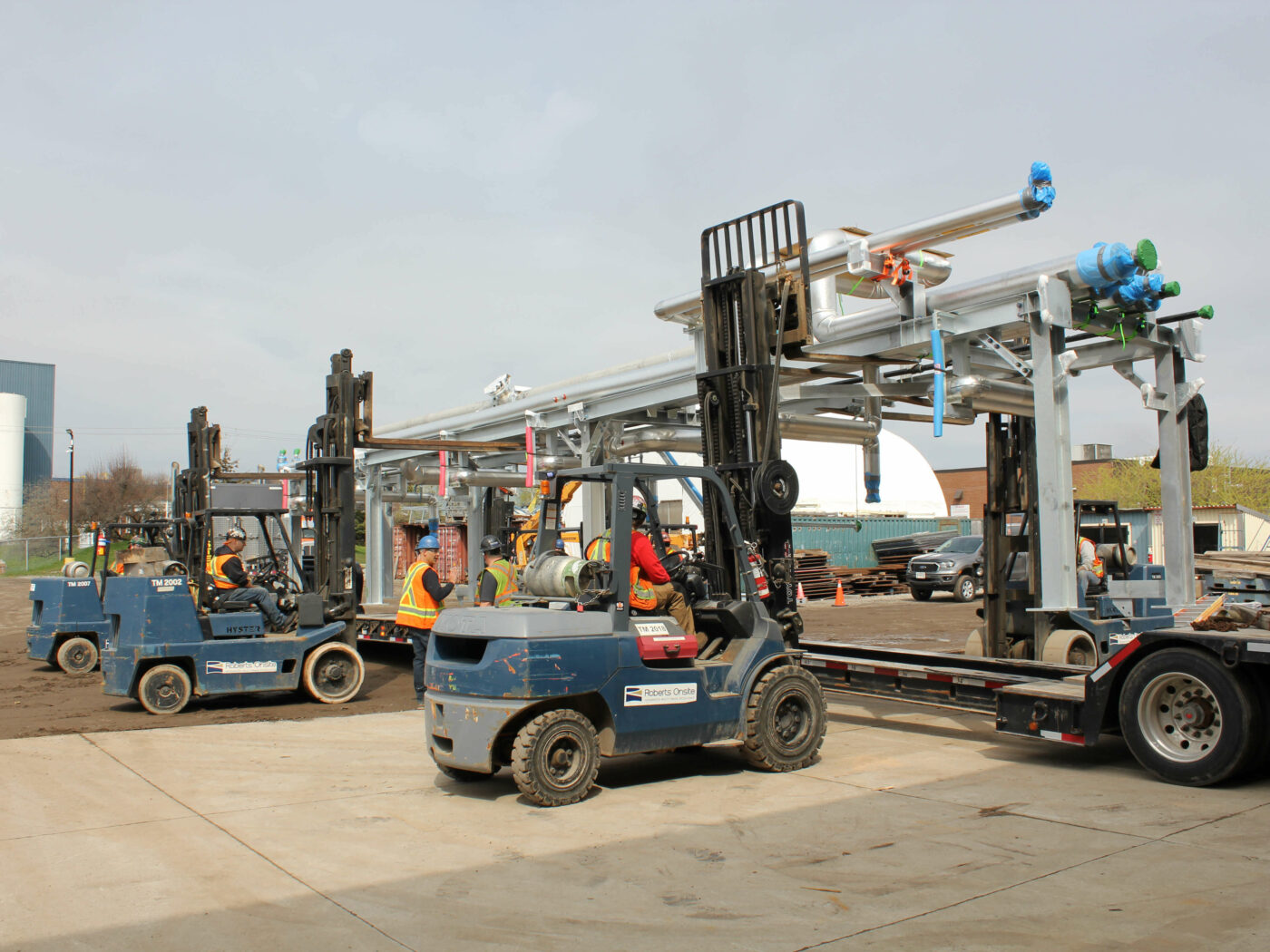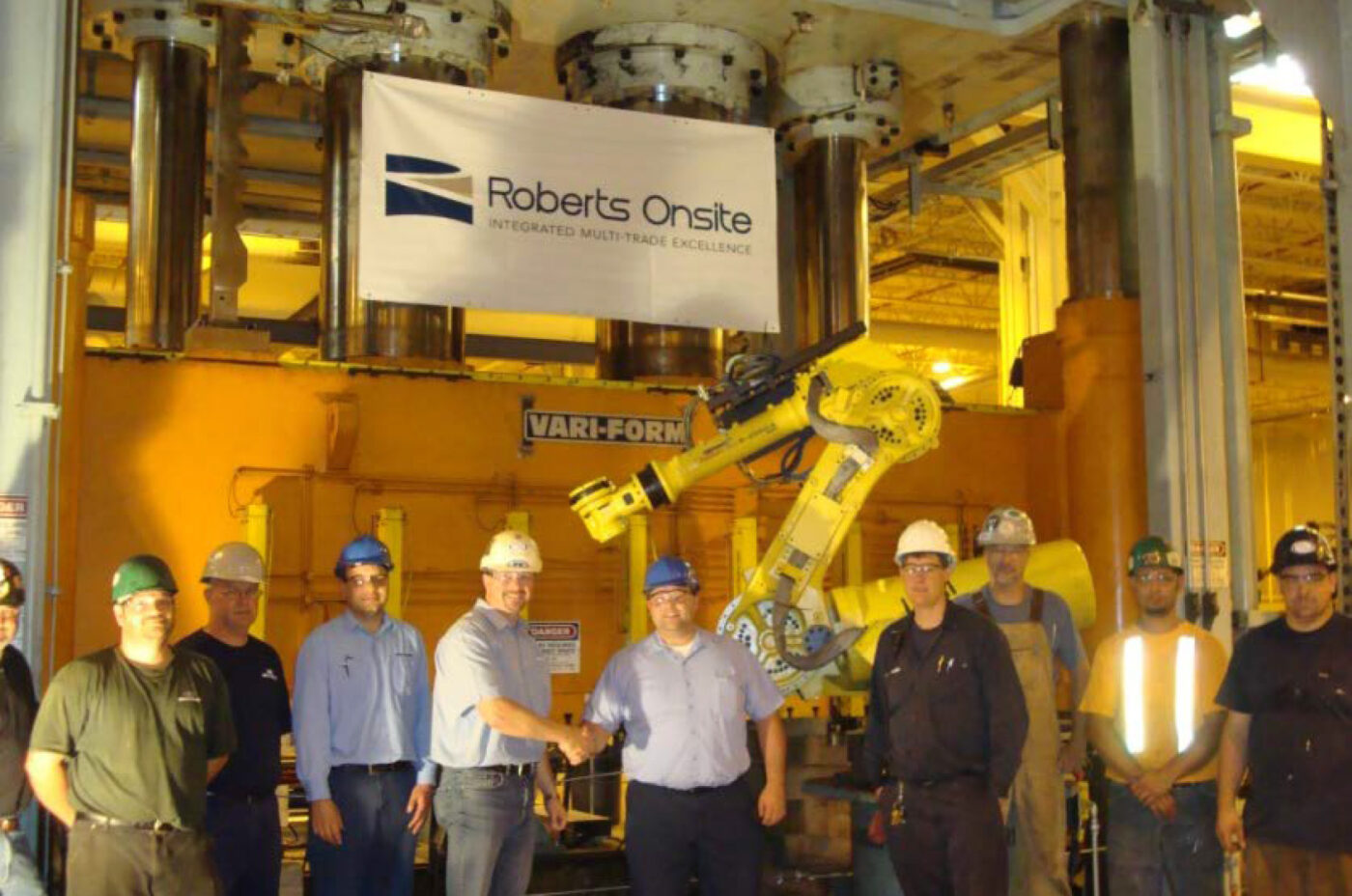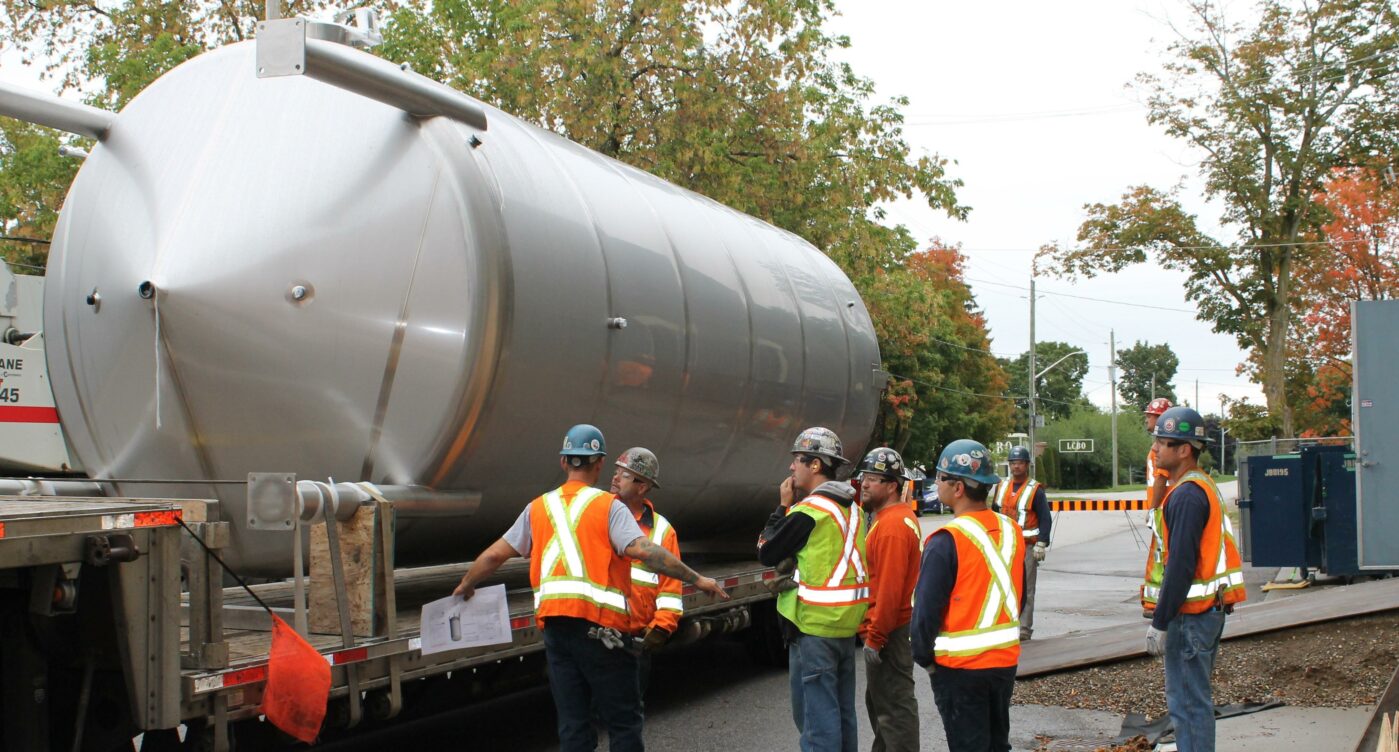Machinery is the vital organs that keep a facility on time and productive. Transporting and installing heavy industrial machinery is a meticulous process that requires a great deal of planning to ensure safety, efficiency, and effectiveness.
It’s a critical operation that can take weeks, months, or even years to execute, and it involves all kinds of personnel to put this machinery in place. The best way to ensure it’s done properly is to follow guidelines for the best practices.
Do - Laying the groundwork for a successful move
- Plan Thoroughly: Like any plan, the details lay the groundwork for a successful project. It’s best to factor in variables like route mapping, site surveys and risk assessments into your transportation and installation plan. It’s important to consider additional aspects such as weight, dimensions, and any special handling requirements for particular machinery.
- Use Qualified Personnel: Employing qualified and trained personnel is a must for any machinery transportation and installation project. Everyone involved in the job, from riggers to crane operators to safety personnel, should be experienced, trained, and certified to perform their tasks.
- Inspect Equipment: Having the proper working tools for the job can save a lot of headaches down the road. Therefore, it’s critical to inspect all transportation vehicles, lifting equipment, and rigging gear to make sure they are in good working condition and meet safety standards.
- Secure Permits and Clearances: Paperwork can be painful sometimes—we feel you. But without the proper documentation, this project can grind to a halt. This is the stage where we plan and map out any road closures or traffic diversions. And of course, obtaining permits and clearances from local authorities for transportation of oversized loads.
- Prepare the Site: this is one of the final preparatory steps. Clear the proper space required for the machinery, and make sure the area is level, stable and can handle the weight capacity of the new equipment in its new home.
Do – On the move
- Communicate Effectively: Once the site is prepared and the work has begun, it’s important to ensure that all involved parties, including the transport team, installation crew, and site supervisors maintain an open line of communication. By using radios or other devices, you can have clear communication all around.
- Use Proper Rigging Techniques: It goes without saying, but proper rigging techniques are crucial to keep equipment safely in place. Attach lifting slings and chains to secure the equipment, and disperse weight evenly to avoid shifting during the transportation phase.
- Monitor Weather Conditions: When the time comes to transport equipment, mother nature’s impact should never be underestimated. Avoid transporting or installing machinery during adverse weather conditions such as high winds, heavy rain, or snow.
- Follow Manufacturer Guidelines: You may not have built these machines, but when it doubt, always refer to the manufacturer guidelines for the best way to transport, handle and install specific equipment. This includes weight distribution, lifting points, and assembly procedures.
- Perform Post-Installation Checks: Once you install your machinery in its new home, it’s time for thorough inspections. This step ensures the machinery is properly aligned, secured, and connected to utilities. Remember to test operational functions as per manufacturer instructions.
Don’t - Things to avoid when transporting and installing machinery
- Neglect Safety Procedures: With extensive projects like these, it might seem like skipping a step can save time or money, but every step is essential in this process. Compromising safety is a non-negotiable. The people working on the project are the most important things, and cutting corners here only leads to big mistakes. Always prioritize the safety of personnel and the integrity of the machinery throughout the transportation and installation process.
- Exceed Weight Limits: Never surpass weight limits, whether it’s transportation vehicles, rigging equipment or the capacity of the site. This can lead to accidents, structural damage, or regulatory violations.
- Ignore Route Restrictions: When planning the route to get the machinery to your facility, always consider route restrictions. These may not come up on Google Maps, but low bridges, narrow roads and weight-restricted areas might derail a project in a hurry. Plan alternative routes if necessary to ensure smooth transportation.
- Skip Training and Briefings: Everyone on the job should know exactly what they’re doing, which means no one should be out of their realm of experience. Conduct pre-job briefings and ensure everyone understands their roles and responsibilities. Avoid allowing untrained personnel to operate machinery or perform critical tasks.
- Use Improper Lifting Equipment: The proper rigging equipment is your lifeline in this instance, and defective or inappropriate lifting equipment and rigging gear can not only jeopardize the quality of the equipment, but the safety of the staff on site. This includes worn-out slings, chains, or hooks that can compromise the safety of the lift.
- Neglect Environmental Impact: it’s your responsibility to consider the environmental impact this transportation and installation could have on the nearby community. Noise, emissions and waste disposal are several byproducts of this process. Comply with environmental regulations and minimize disruption to surroundings.
- Rush the Process: Time is always of the essence, but it should never be at the sacrifice of any other factor. Avoid rushing through any stage of the transportation and installation process. Take the necessary time to plan, execute, and verify each step to minimize risks and ensure successful completion.
- Overlook Documentation: Keeping tidy paperwork may not sound exciting, but it’s your key to staying on top of the project. Documentation like permits, safety inspections, equipment checks, and post-installation reports must be on hand at all times.
Our successful examples across the industry
It takes an entire team of professionals to pull off a successful project, and that’s exactly what Roberts Onsite accomplished for a manufacturing plant in Southwestern Ontario. We transported a 4000-ton press cell over 40 truckloads, with a total weight of over 2,000,000 pounds.
Once the equipment arrived at the new plant, Roberts Onsite had the site operational within eight weeks. The press cell now manufactures frames for a major automotive company.
A partial shutdown can be one of the most complicated projects, but we successfully completed a plant relocation for another client based in Ontario. Instead of one big move, this required more intricate timing to keep the plant operational during the moving phase.
Our millwrighting and rigging team was responsible for dismantling, loading, unloading and reassembling all required equipment in separate phases to maintain business operations during the project.
Roberts Onsite is your professional in the rigging and machine transportation industry
Whether it’s across town, or across the border, Roberts Onsite is your trusted professional for machinery transportation and installation. We’ll source the proper rigging equipment to keep your equipment secure through transportation, and our millwrighting services will get your equipment back up and running. By choosing a trusted multi-trade contractor like Roberts Onsite, you’ll have the power of 85 years of expertise on your side. Contact Roberts Onsite for a quote for your next Machinery Transportation & Installation project.

